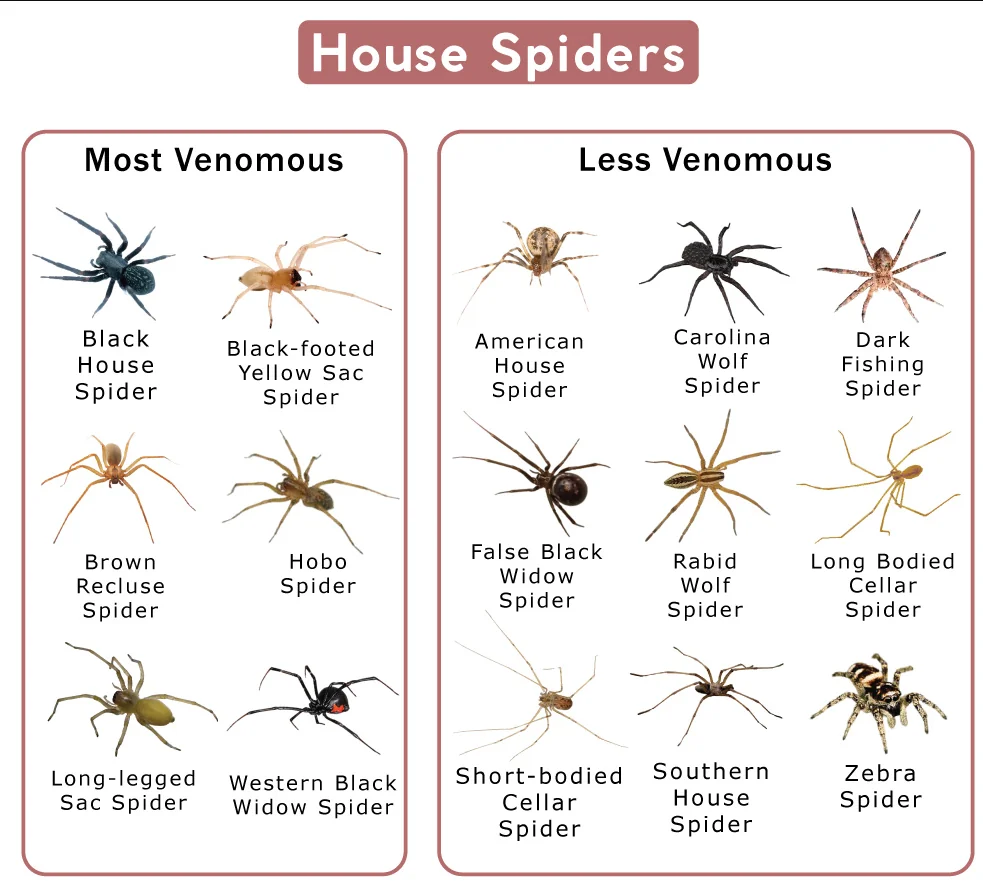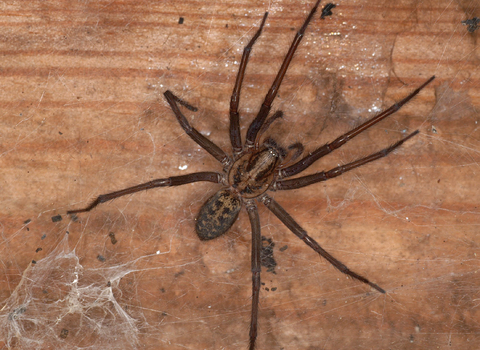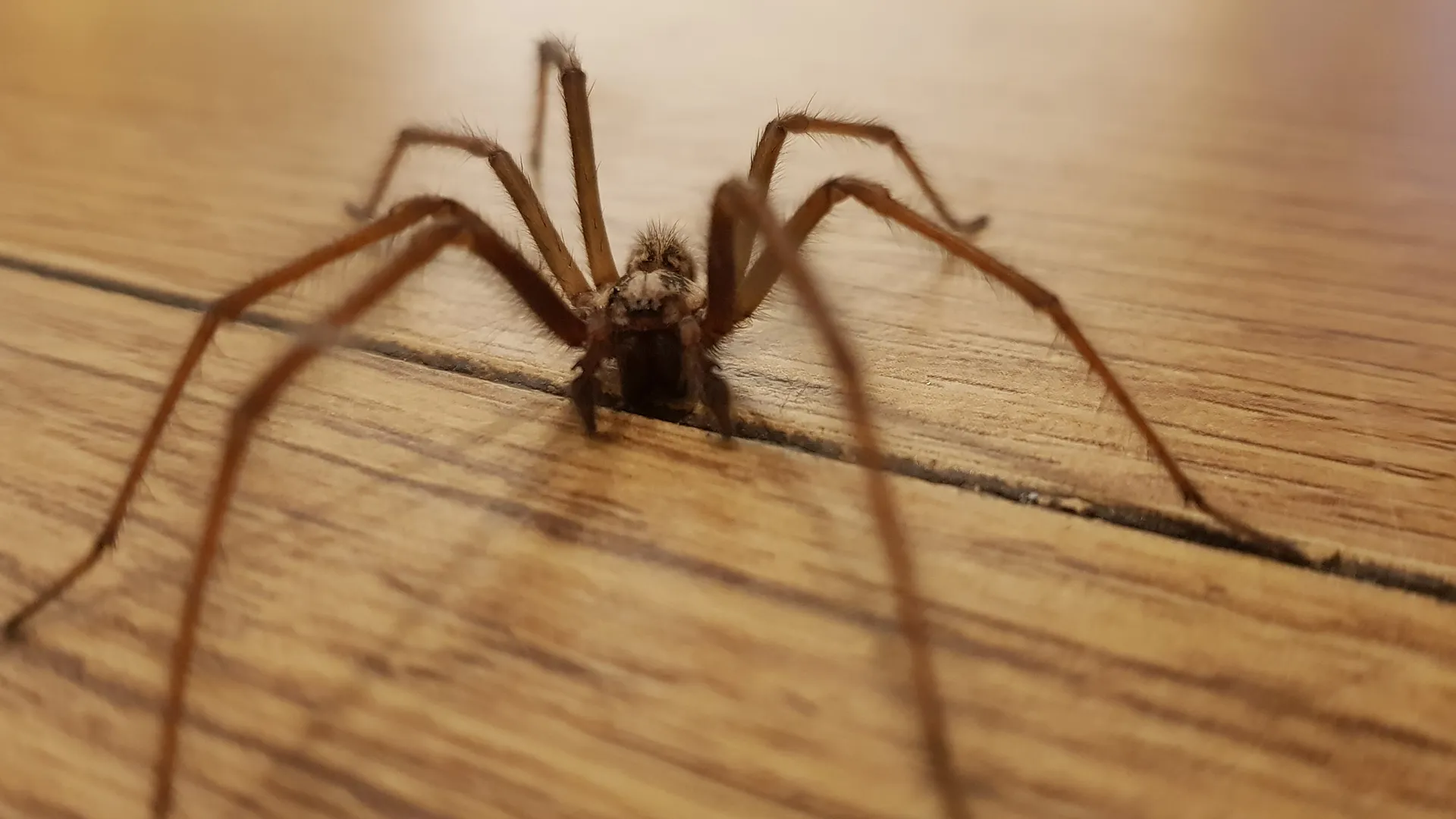Spider Treatments in Florida
Exterminator Services for Fort Myers, Estero, and Immokalee
Florida’s subtropical climate, marked by mild winters and high humidity, fosters a vibrant ecosystem teeming with diverse wildlife—including a wide range of spider species. While spiders play an important role in controlling insect populations, they can become unwelcome guests when they find their way into homes, offices, and commercial buildings. In places like Fort Myers, Estero, and Immokalee, spiders thrive year-round thanks to the region’s favorable temperatures and abundant food sources. Although many of these arachnids are harmless, others may be venomous or simply unsettling to residents who prefer not to share their indoor spaces with eight-legged tenants.
This service page explores why spiders flourish in Florida’s environment, how to recognize a potential spider issue, and why partnering with a professional spider exterminator can offer both peace of mind and a safer living space. When spider infestations go unchecked, they can lead to unsightly webs, increased risk of bites, and ongoing discomfort for occupants. By taking timely, informed measures, property owners can eliminate spider populations effectively and discourage their return. The sections below outline the key details you need to know about managing spider infestations, maintaining a clean environment, and benefiting from specialized treatments that target both indoor and outdoor spider activity.
Why Spiders Flourish in Florida

1. Warm, Subtropical Climate
Florida’s steady warmth and moderate winters create optimal conditions for many spider species to remain active year-round. Unlike colder regions, where snow and freezing temperatures curb arachnid populations, Florida rarely experiences prolonged cold snaps. Spiders can hunt, mate, and produce egg sacs in every season, leading to continuous breeding cycles that sustain a robust spider population. Homes and commercial spaces provide additional shelter, making it even easier for spiders to avoid any chilly or inclement weather.
2. Abundant Insect Populations
Spiders feed primarily on insects, which are also plentiful in Florida’s lush environment. From mosquitoes and flies to cockroaches and moths, insects abound in both urban and rural settings, offering a reliable food supply for spider species. In residential areas, excessive outdoor lighting or neglected debris can draw insect swarms near doorways or windows, effectively inviting spiders to set up webs nearby. As the insect population grows, the spider population follows suit, exploiting an easily accessible buffet.
3. Indoor Shelters in All Seasons
Florida’s architecture often includes screened porches, crawl spaces, attics, and air-conditioned interior rooms—each of which can serve as perfect hideouts for spiders. Tiny cracks around windows or doors, loose weather stripping, and gaps in foundations all present convenient entry points. Once inside, spiders find hidden corners behind furniture or unused storage areas to spin webs and capture insects that have also wandered indoors. Many homeowners unintentionally encourage spider harborage by storing boxes in dark basements or by overlooking small structural openings that allow these pests to move freely.
4. Year-Round Activity
Because of the ongoing mild temperatures and high humidity, many spiders in Florida do not experience dormant periods. This means the natural breaks in breeding cycles that might occur in colder climates do not apply here. Instead, spiders can reproduce multiple times in a single year, leading to higher concentrations of adult spiders, juveniles, and egg sacs scattered throughout yards, garages, and living spaces. Quick, effective intervention is key to preventing a minor spider issue from escalating into a situation that feels overwhelming.
Telltale Signs of Spiders
1. Webs
The most obvious sign of spider activity is the presence of webs. Different species create webs of varying shapes and densities, from the classic orb webs often found in gardens to messy cobwebs lurking in corners or behind furniture. Although most webs are constructed outdoors, certain species commonly spin webs indoors if food is available and the area remains undisturbed.
2. Egg Sacs
Many spiders lay eggs in round or teardrop-shaped sacs made of silk. These sacs often appear attached to webs, tucked into corners, or hidden behind objects. Egg sacs can contain dozens to hundreds of spider eggs. Spotting one or more spider egg sacs in your home or workplace signals ongoing reproduction, raising the likelihood of a larger infestation if not promptly addressed.
3. Visible Spider Sightings
Seeing more spiders than usual inside your property—especially in daytime—indicates that their populations could be growing. While occasional solitary spiders may wander in by accident, repeat sightings of similar species (or multiple species) suggest an established presence. Certain venomous species, such as the black widow or brown widow spider, may also show up in garages, sheds, or wood piles, making accurate identification crucial for safety.
4. Increased Insect Activity
An uptick in insect pests can precede or accompany spider problems. If your home or business becomes a hotspot for flying insects, crawling bugs, or other small pests, it becomes a magnet for spiders seeking easy meals. Successfully controlling insects often helps curb spider populations, but in some cases, additional focused spider treatments are necessary.
5. Web Clusters in Undisturbed Areas
Basements, attics, and storage spaces that people seldom enter can become havens for spider activity. If you notice large clusters of webs layered in these undisturbed areas—especially if they contain multiple egg sacs or dead insects—chances are good that spiders have been reproducing there for a while. Regularly inspecting these out-of-the-way spots can help you catch spider issues early.
Risks of Ignoring Spiders
1. Potential Bites
While many spiders are harmless and even beneficial by controlling insect populations, some can deliver painful bites that cause swelling, redness, or more severe reactions. In Florida, the black widow is one of the more notorious venomous species. Though encounters are relatively rare, ignoring spider infestations increases the likelihood of accidental contact, particularly in cluttered spaces or outdoor areas with minimal foot traffic.
2. Allergic Reactions
Spider bites can trigger allergic responses in sensitive individuals. Symptoms might range from mild itching and localized swelling to more significant discomfort. Severe cases, though uncommon, may require medical attention if shortness of breath or acute pain develops. Moreover, people with existing allergies to insect venom sometimes discover cross-sensitivities to spider bites, underscoring the importance of keeping spider populations in check.
3. Rapid Population Growth
Female spiders can produce hundreds of offspring from a single egg sac, which sometimes hatch in just a few weeks, depending on temperature and species. Inside climate-controlled buildings, these offspring can thrive without the natural predators or temperature drops that might otherwise curb their growth. If left unchecked, this ongoing reproductive cycle leads to dense concentrations of spiders throughout a property.
4. Unpleasant Web Accumulation
The aesthetic and practical downsides of ignoring spiders are also worth noting. Webs can accumulate in corners, windowsills, basements, or around light fixtures, creating an unkempt appearance. For businesses, these visible webs may leave a negative impression on clients or customers. Unaddressed spider activity can create a sense of unease, disrupting daily routines and comfort levels.
5. Secondary Pest Issues
Spiders feed on other pests, which means a persistent spider infestation might signal underlying insect problems. If large numbers of spiders have found your property appealing, it may mean that insects such as flies, moths, or ants are also abundant. Overlooking spider infestations may indirectly allow these insect populations to flourish, leading to a multi-layered pest challenge that becomes more complicated to resolve.

Why a Professional Exterminator Is Crucial
1. Accurate Identification
Florida is home to numerous spider species, ranging from harmless house spiders to more concerning varieties like brown widows or black widows. A skilled spider exterminator can determine which species have invaded your property and recommend the most effective and safe treatments. Misidentification often results in ineffective control strategies, allowing spiders to persist despite attempted DIY measures.
2. Safe Product Handling
Applying store-bought pesticides without proper knowledge can pose risks to people, pets, and the environment. Professionals use specialized products designed for targeting spiders while minimizing exposure to non-target species. This careful approach helps ensure that treatments are both thorough and applied with occupant safety in mind.
3. Comprehensive Treatment
Eliminating spiders involves more than just spraying for adult spiders. Web removal, locating and treating egg sacs, and addressing insect populations are all vital steps. Professionals approach spider control systematically, tackling current infestations and implementing measures that discourage re-infestation. By addressing the root causes, exterminators can reduce the likelihood of spider populations bouncing back immediately.
4. Exclusion Techniques
A reputable exterminator will also focus on preventative measures, sealing off entry points such as gaps under doors, cracks in exterior walls, or torn window screens. By preventing spiders and the insects they eat from entering the property, these exclusion methods offer long-term relief. Professionals often provide guidance on landscaping tips—like pruning shrubs or removing debris near foundations—to decrease spider harborage sites around the structure.
5. Follow-Up Support
Some spider species may lay egg sacs that hatch weeks after an initial treatment. Professional teams often schedule follow-up visits or offer guidance on how to monitor your space for renewed activity. If new spider sightings occur, additional spot treatments or recommendations can be provided quickly. This ongoing support ensures that your property remains as spider-free as possible.
Typical Methods for Spider Treatments
1. Inspection and Web Removal
The first step is a detailed inspection to identify spider hotspots and potential entry points. Exterminators then remove existing webs, egg sacs, and obvious spider hiding places. Clearing these areas immediately reduces active populations and helps pinpoint exactly where spiders are establishing nests.
2. Targeted Treatments
Depending on the spider species and the extent of the infestation, professionals may use insecticidal sprays, dust treatments, or residual products. These treatments are applied around window frames, baseboards, corners, eaves, and other spots spiders commonly inhabit. Because many spiders hunt away from their webs, carefully chosen products help target both web-building species and those that roam in search of prey.
3. Indoor and Outdoor Barrier
Applying a protective barrier around the exterior of the property can repel spiders from nesting near doors, windows, or foundation walls. Indoors, a similarly targeted approach along perimeter edges helps deter spiders from re-entering once an infestation is cleared. This barrier method works best when combined with ongoing inspection and prompt response to any new spider sightings.
4. Sanitation and Cleanup
Reducing clutter and removing unneeded storage boxes or debris can limit potential hiding spots. Keeping indoor and outdoor areas clean discourages insects, which in turn lowers spider attraction. After treatment, wiping down surfaces and vacuuming in corners or under furniture can eliminate dead insects and leftover webs, creating a less appealing environment for spiders.
5. Monitoring and Follow-Up
Continuous monitoring ensures that any newly hatched spiderlings or missed adult spiders are dealt with promptly. An exterminator may place sticky traps or visual inspection tools around problem areas to detect spider activity early. Scheduling periodic visits, especially in Florida’s year-round climate, helps you stay on top of spider control before infestations become problematic again.
Service Areas
Fort Myers
Fort Myers benefits from waterfront living, scenic vistas, and a vibrant commercial sector, yet these same qualities also allow spiders to thrive. Warm, humid conditions and ample foliage near waterfront properties encourage insect life, which in turn supports a robust spider population. Whether you operate a local business downtown or own a home in the surrounding neighborhoods, professional spider treatments can help you maintain a cleaner, safer indoor environment.
Estero
Situated between Fort Myers and Naples, Estero blends suburban developments, shopping centers, and natural preserves. This mix of landscapes creates a year-round haven for various pests, including spiders seeking shelter and continuous food sources. For homeowners or business managers in Estero, prompt spider control can prevent webs from piling up in corners and reduce interactions with potentially unwanted arachnids.
Immokalee
Known for its agricultural backdrop, Immokalee faces unique challenges in pest management. Fields, farms, and storage facilities often offer ample insect prey for spiders. Warm Florida weather allows these insects—and by extension, spider populations—to flourish. By implementing comprehensive spider treatments, property owners can protect both residential and commercial spaces from uninvited eight-legged visitors.

Why Our Spider Treatments Excel
1. Florida-Focused Expertise
Years of hands-on experience in southwestern Florida, including Fort Myers, Estero, and Immokalee, allow our team to anticipate spider behavior and seasonal trends. We tailor our spider control methods to the specific conditions in each location, factoring in local climates, building styles, and prevalent spider species.
2. Thorough Inspections and Customized Plans
Just as no two properties are exactly the same, spider infestations can vary in severity and origin. Our approach begins with a meticulous inspection to determine spider species, nesting spots, and potential entry points. Based on these findings, we craft a customized plan that addresses existing infestations and prevents future outbreaks.
3. Emphasis on Safety and Minimal Disruption
Effective spider control should not come at the expense of occupant safety or daily routines. Our targeted applications use industry-standard products carefully selected for their impact on spiders while minimizing risk to people, pets, and beneficial insects. We provide clear instructions to residents or staff about any short-term precautions to take post-treatment.
4. Ongoing Education and Support
Beyond the extermination process itself, we strive to empower clients with knowledge. This includes tips on reducing clutter, improving sanitation, and checking the exterior of buildings for small openings that can serve as spider entry points. Should you notice new spider sightings or egg sacs after treatment, our team remains available for guidance and additional service visits.
5. Broad Reach and Quick Response
Serving multiple communities throughout southwestern Florida, we recognize that immediate action can greatly simplify spider management. Whether you call Fort Myers home or operate a commercial facility in Estero or Immokalee, our swift response helps prevent a minor spider issue from developing into a major infestation.
Next Steps
If you notice an uptick in spider webs, discover multiple egg sacs, or frequently spot spiders scuttling across your floors and walls, it’s time to take action. Contact us to learn more or schedule your service. Early intervention can halt the breeding cycle, reduce risk of bites, and restore comfort to your living or working spaces. By relying on professional extermination, you safeguard both property and peace of mind.
Our proven methods combine thorough inspections, targeted treatments, and meaningful preventative measures to keep Florida spiders under control. Don’t let unwanted arachnids overshadow the enjoyment of your home or business. Address any spider concerns as soon as they arise, and partner with experts who understand Florida’s unique climate and pest challenges.
Maintaining a Spider-Free Environment
- Seal Gaps and Cracks
Examine the exterior of your property for small openings around doors, windows, or utility lines. Spiders often enter through these tiny gaps. Use caulk, weather stripping, or sealant to close off potential entry points. - Minimize Outdoor Lighting
Bright lights near doorways or windows can attract insects at night, providing spiders with a convenient feeding ground. Consider using motion-activated fixtures or placing lights farther from entrances. - Control Indoor Clutter
Stacks of papers, boxes, or clothes in basements, garages, and attics create safe harborage for spiders. Regularly organize and clean these areas to disrupt webs and remove hiding spots. - Store Food Properly
While spiders do not eat people’s food, they are drawn to insects that might feed on exposed items or leftovers. Keeping your pantry sealed and disposing of garbage promptly helps reduce insect populations, indirectly limiting spider activity. - Monitor House Plants and Moisture
Overwatered potted plants or excessive indoor humidity can attract insects. Spiders thrive where insect prey is abundant. Ensuring proper ventilation and avoiding stagnant water can help keep pest populations in check. - Stay Alert to Early Signs
Check corners, ceilings, and less-frequented rooms for webs or egg sacs. Remove them promptly and keep an eye out for any sudden increase in spider sightings that might require professional attention.
With consistent vigilance, proper housekeeping, and the support of skilled spider exterminator services, residents and business owners in Fort Myers, Estero, and Immokalee can reduce the likelihood of spider infestations. Florida’s climate may favor year-round spider activity, but timely intervention and sound preventive practices make it possible to maintain a comfortable, arachnid-free space. By working proactively to address spider concerns, you uphold the structural integrity and appearance of your property, alongside the health and well-being of everyone who lives or works there.
